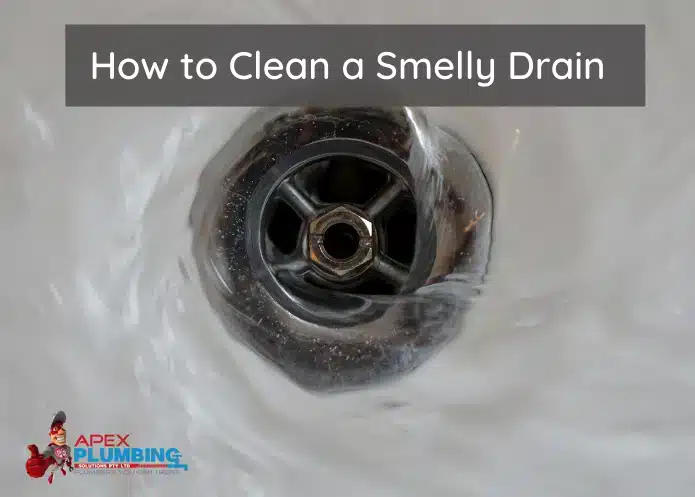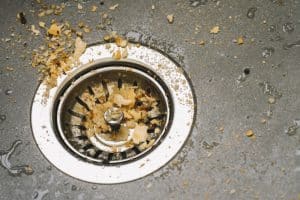I’m sure that some of you reading this have definitely been dealing with nasty smells coming from your drain and don’t know How to Clean a Smelly Drain. Gross! Nobody likes a smelly drain, especially when it’s your responsibility to clean it. If your drain has been smelling bad for a while, don’t worry – we have the ultimate guide to cleaning it. In this blog post, we will discuss everything you need to know about getting rid of that pesky smell. We’ll cover the different methods you can use, as well as some tips and tricks that will make the process a lot easier, and in the worst-case scenario; what to do when all else fails. So read on, and get ready to say goodbye to that smelly drain once and for all!
What Causes Smelly Drains?
Before we get into the different methods you can use to clean your drain, let’s first take a look at what causes smelly drains in the first place. There are actually quite a few things that can cause this unpleasant smell, including:
- Food scraps and food particles
- Dirty water or soap residue
- Grease and fat build-up
- Hair, dead skin cells or other debris stuck in the drain pipe.
There could be odour-causing bacteria feeding on debris in your pipes. This process will give off a foul-smelling hydrogen sulphide gas, which smells like sewage or rotten eggs. Also, mould grows where it’s warm and wet — and mould growth on the debris causing a drain clog can also cause a bad smell.
How to Prevent Stinky Drains From Occurring?
Don’t Let Anything Build-Up
Bacteria and germs thrive in unsanitary conditions, and they can grow on any surface or object that has water. When the dishwasher overflows or a leak occurs in the washing machine, for example, this is precisely what happens. The foul-smelling material is simply released into your sink once again unless you clean it right away. Hair, soap, grease, food waste, and toothpaste are all typical components of organic residues. You can prevent this by using strainers on all of your sinks and avoiding pouring items down there.
Make Sure The P-Trap Functions Correctly
The P-trap is the part of the drain that stores water. It works by blocking gases from escaping through the pipe and into your home. The P-trap is usually found wherever the pipe dips down into a U-shape, and this is where the water sits. The P-trap can’t stop the gases from coming into your home if the water isn’t sitting in it properly. This happens when there is a leak. If this happens, check for water damage around the sink or drain. If you can’t find a leak, bring in a plumber to check it thoroughly.
Things You Will Need
Depending on which method you decide to use, here is a list of things you will need:
- bucket
- water
- vinegar
- baking soda
- plastic drain snake
- draino
The Hot Water Method
Water, dish soap, and a pair of gloves are all you need to clean your smelly drain. They can also clean greasy drains thanks to the fact that they work similarly to hot water and dish soap on dirty dishes. Bring a pot of water to a boil for this method. Once the water has come to a boil, pour in several squirts of liquid dish detergent. Now carefully pour 3/4 of the mixture down your drain and wait for a few minutes for it to dissolve any oily buildup. Next, turn your tap on full blast while on cold and wait for a minute so it can solidify any remaining grease. Finally, pour the rest of the mixture down the drain and hopefully, this method would have worked to remove that foul smell from your drain!
The Vinegar Method
Vinegar is an excellent deodorizer. It also dissolves grease to aid in the removal of blocked drains by breaking down biofilm or other debris. Hot vinegar may be used to clear small clogs, which are frequently the source of a drain’s stench. Bring four cups of water to a boil and pour half of it down the drain. Run cold water from your tap on full blast for a minute or two, and finally pour the rest of the hot vinegar down the drain.
The Baking Soda Method
Baking soda is another phenomenal way to deodorize any bad smells coming from your drain. For this method, you need to run hot water down the drain for a minute to help soften any blockage in the drainpipe. Then, dump 1 cup of baking soda (bicarbonate) down the drain and chase it with 2 cups of vinegar. Wait for the fizzing to stop, and rinse the drain first with hot and then with cold water for one minute each.
Try a Plastic Drain Snake
Simply remove the drain plug and slowly feed the snake down the blocked drain. Then, holding it by the plastic handle, turn it slowly. The snake is covered in short, tough bristles that collect hair and other debris coating the inside of your drain. Let me just warn you now, the results can be disgusting — but effective.
Use A Chemical Solution
This method is pretty self-explanatory. there are heaps of products on the market that neutralize foul smells coming from your drain. Run down to your local store and see what they have, this method would be best to try if all else fails!
Still, Stinks? It May Be Time To Call A Plumber
Blocked and stinky drains are prevalent in Australian homes. However, these may usually be prevented, and foul odours can be relieved by implementing regular cleaning procedures. In certain situations, taking care of this on your own might not work. Smelly drains will lead to more serious problems unless they are treated promptly by a professional plumber in such circumstances. If you’ve tried all our tips and are still having to deal with a stinky drain, give us at Apex Plumbing Solutions a call. We can help with issues like Blocked Drains in Sydney, and we won’t hesitate to find a solution for the issue at hand.
Apex Plumbing Solutions Are At Your Service
The cleanliness of your drain is the key to preventing any foul odours. The more you clean it regularly, the less likely you are to have an issue with smells in the future. If this article has given you some inspiration on how to clean a smelly drain or if all of these methods sound intimidating and want help enacting them, give us at Apex Plumbing Solutions a call. We’re ready and waiting to help our customers with any plumbing issues they may be dealing with. Which method worked best for cleaning your drains? Let us know!



